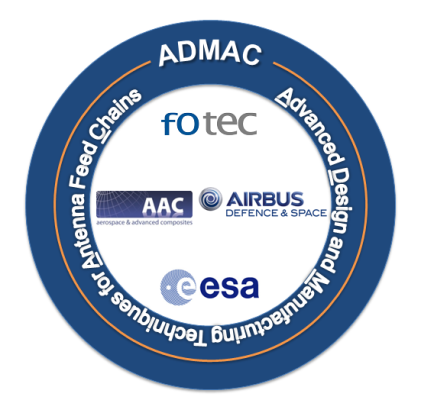
-
StatusCompleted
-
Status date2019-09-10
-
Activity Code5B.121
After the agreement on the advanced manufacturing technique (powder bed fusion process or additive layer manufacturing) to be used for the production of RF hardware in a layer-by-layer approach, several design iterations with accompanying RF simulation were performed to combine the needs of the manufacturing and RF side. The main objective of the activity was the evaluation of advanced design and manufacturing techniques to accomplish mass and lead time savings. The additive layer manufacturing or powder-bed fusion process is not a standard for the production of RF hardware, the focus of this activity was also the identification of limitations and the development of design guidelines. As an achievement of this project a list of limitations was found such as the circularity deviation of circular waveguides if horizontally built. Additionally, it was shown that the impact on RF performance of diffuse surface roughness due to the attached powder particles during manufacturing can be neglected for e.g. the C-band (finding was made during measurements of the C-band Septum Polarizer). Regarding advanced design, the rectangular channel cross section was replaced by an elliptical shaped channel in case of the Ku-band OMT. It turned out that this channel shape is feasible. All relevant information is summarized in the Final Report (FR) document.
The key challenges of this project were the fulfilment of the requirements regarding precision and surface quality of the RF hardware using additive layer manufacturing. Furthermore, the new and innovative thinking regarding the design of RF hardware, meaning unconventional ways of waveguide channel design, reduction of assembly efforts and evaluation of advanced manufacturing potentials.
All RF hardware manufactured in this activity are technology demonstrators (no flight hardware) with acceptable RF performance values. The advantage of the parts produced in this activity is that their design cannot be realised by conventional machining techniques. The know-how about additive layer manufacturing gained is beneficial and can be used as a baseline for future products.
The number of flanges and screws needed for assembly was reduced significantly compared to conventional RF hardware. Furthermore, additional functionality such as heat radiation plates was implemented in the design of the Ku-band OMT. The change to elliptical waveguide channels supports the applicability of additive layer manufacturing for RF hardware.
The hardware produced in this activity are monolithic Aluminium feed horn, OMT, reverse turnstile, etc. RF demonstrators without implementation in a system architecture.
Based on the outcome of the first contractual phase, in the second phase three RF demonstrators were designed and approved during the Baseline Design Review (BDR). After that FOTEC started the manufacturing of the agreed geometries using their Additive Layer Manufacturing (ALM) system, the EOS M400. In the post-processing phase all demonstrators were surface finished by sand blasting and the functional surfaces were machined. A Test Readiness Review (TRR) was held to review the RF hardware and to agree on the test procedures. Airbus DS applied only internal standard tests. Finally, a results analysis completed the project.
The project has been completed. In total three RF demonstrators (Ka-band horn, Ku-band OMT and a C-band Reverse Turnstile) have been designed and simulated by Airbus DS. The monolithic and innovative design of the OMT and the Reverse Turnstile cannot be realised by conventional machining, instead Additive Layer Manufacturing was used for manufacturing. The results of the RF performance test campaign showed that return loss or port-to-port isolation are acceptable. Nevertheless, some challenges for follow-on activities such as geometry deviations and circularity issues have been identified.





